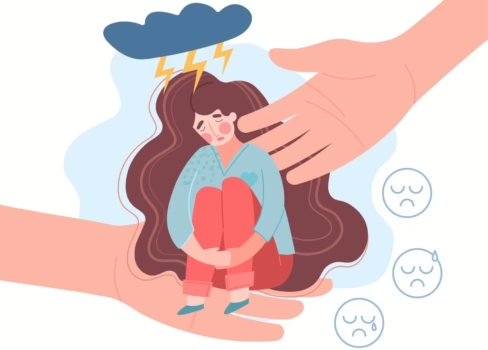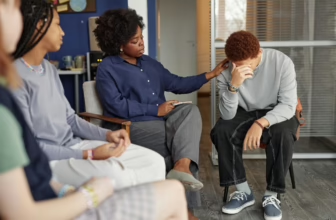Suicide is a deeply painful topic, but it’s one we must talk about. Every year, countless lives are lost to suicide, leaving families and communities in shock and grief. The good news? Most suicides are preventable. Recognizing the warning signs and knowing how to respond can save a life.
We all have a role to play—whether you're a friend, family member, teacher, or just someone who cares. In this article, we’ll explore the facts about suicide, the warning signs, and practical steps you can take to help someone in crisis.
Why Suicide Prevention Matters
Suicide is a public health crisis, especially among vulnerable populations.
- According to the World Health Organization (WHO), over 700,000 people die by suicide every year, making it one of the leading causes of death globally. That’s one person every 40 seconds [1].
- In the U.S., suicide is the second leading cause of death among people aged 10–34 [2].
- Yet, nearly 80% of people who die by suicide show some warning signs beforehand [3].
These numbers highlight the urgency of open conversations and early intervention.
Common Risk Factors
Understanding risk factors can help identify people who may be more vulnerable to suicidal thoughts or behaviors.
Mental Health Disorders
Depression, bipolar disorder, PTSD, schizophrenia, and substance abuse increase the risk significantly.
Chronic Stress
Financial problems, job loss, chronic illness, or a recent loss can push someone toward hopelessness.
Trauma or Abuse
Physical, sexual, or emotional abuse—especially early in life—can lead to long-term mental health struggles.
Isolation
Lack of social support is one of the strongest predictors of suicidal behavior.
Previous Attempts
A person who has attempted suicide before is at a much higher risk of trying again.
Warning Signs to Watch For
People often show emotional, behavioral, and physical changes before a suicide attempt. Knowing these signs can help you take action.
Verbal Cues
Listen carefully to what someone says:
- “I feel like a burden.”
- “I can’t go on.”
- “Everyone would be better off without me.”
- “I just want the pain to stop.”
Behavioral Changes
- Withdrawing from friends, family, or activities
- Giving away personal items
- Sleeping too little or too much
- Increased use of alcohol or drugs
- Searching online for ways to die
Emotional Signals
- Intense mood swings
- Hopelessness
- Rage or uncontrolled anger
- Feeling trapped or unbearable pain
Even if someone doesn’t show all of these signs, one or two might still be a red flag. Trust your instincts.
What You Can Do to Help
If you suspect someone is thinking about suicide, you might feel scared or unsure. That’s normal. But reaching out can truly make a difference.
1. Ask Directly
Asking “Are you thinking about suicide?” does NOT put the idea in someone’s head. In fact, it shows you care.
“I’ve noticed you seem really down lately. Are you thinking about hurting yourself?”
Ask calmly and without judgment. Listen to their answer.
2. Stay With Them
If the person says they’re suicidal, don’t leave them alone. Remove any dangerous items (like pills, weapons) if it’s safe to do so.
Stay with them or connect them to someone who can—whether it’s a friend, family member, or crisis professional.
3. Encourage Professional Help
Gently guide the person toward resources:
- A therapist or counselor
- A mental health crisis line
- Their primary care doctor
If they’re unwilling, offer to help them make an appointment or go with them.
4. Connect to Crisis Services
In the U.S., call or text 988 to reach the Suicide & Crisis Lifeline. It’s free and available 24/7.
In the U.K., call Samaritans at 116 123.
In other countries, the International Association for Suicide Prevention has a global list of hotlines.
Support Yourself Too
Supporting someone at risk of suicide can be emotionally exhausting. Make sure to:
- Talk to a therapist or support group
- Practice self-care
- Set boundaries when needed
You can’t pour from an empty cup. Caring for yourself allows you to be a better support to others.
Creating a Supportive Environment
We can all help reduce the stigma that surrounds suicide. Here's how:
Start the Conversation
Talk openly about mental health. It normalizes asking for help and shows others they’re not alone.
Educate Yourself and Others
The more we understand mental health, the more empowered we become. Share articles, attend training, or take mental health first aid courses.
Promote Hope
Share positive stories of recovery and healing. Let people know that help is available and healing is possible.
When to Call 911 or Emergency Services
If someone is in immediate danger—talking about a plan or has the means to harm themselves—call 911 (or your local emergency number).
Let the dispatcher know it’s a mental health emergency. Ask for a crisis-trained officer if available.
Conclusion
Suicide is preventable. By learning the warning signs, starting conversations, and connecting people to help, we can save lives. You don’t need to be a mental health expert to offer support—you just need to care, listen, and take action.
Together, we can build a world where people feel seen, heard, and valued—especially during their darkest moments.
Citations
- World Health Organization. (2023). Suicide. https://www.who.int/news-room/fact-sheets/detail/suicide
- National Institute of Mental Health. (2023). Suicide. https://www.nimh.nih.gov/health/statistics/suicide
- American Foundation for Suicide Prevention. (2023). Risk Factors and Warning Signs. https://afsp.org/risk-factors-and-warning-signs
Follow me down the rabbit hole!
I'm Alice and I live with a dizzying assortment of invisible disabilities, including ADHD and fibromyalgia. I write to raise awareness and end the stigma surrounding mental and chronic illnesses of all kinds.








